Introducing Schleese's
Therapeutic Panel
with the
Shoulder Rolling System (SRS)!
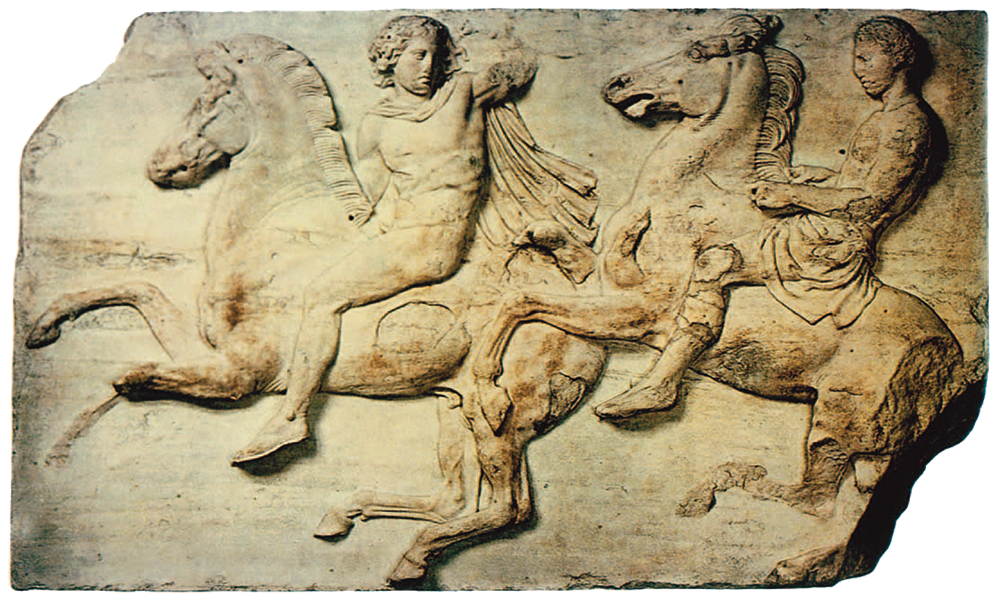
"Seven Thousand Years of Development and
Optimization Between Man, Horse, and Saddle."
- Christoph Rieser
“Seven thousand years of development and optimization between man, horse and saddle.” – Christoph Rieser
The relationship between man, horse and saddle is not a recent one. For centuries, horses were used in times of war, for transportation, for tilling/farming, etc. Humans have developed and improved on the man-horse-saddle relationship over time, not just from a place of desire, but out of necessity to ensure sustainability in their investment in the horse. At the time, it was understood that 32 gross capsules in the horse’s spine finished developing when the horse was 7½ years old and the shoulder blade finished developing at 4 years old. Due to this, the rule of thumb was to start a horse at 3 years old by lightly riding 3 days per week, accompanied by 4 days of groundwork per week, increasing one day of riding (per week) and subtracting one day of groundwork (per week) every year, until the horse is 7 years old and is riding every day. This rule of thumb ensured that the horses had the necessary training at the right pace to support the muscle growth and proper development of the horse’s back.
Today, horses are used primarily for sport and pleasure. The majority of riders buy horses that have already been saddled, very few breed and train them from start to finish. Of those few, even fewer start and train horses correctly as previously mentioned. Many often start horses as early as 1½ years old, riding them every day, unaware of the damage they are causing to the development of the horse’s back.
As per recent studies by Dr. Sue Dyson (view article), most horses have damaged backs and work under functioning lameness. In this study, Dr. Dyson found signs of lameness in 73% of horses that riders identified as sound. Additionally, nearly 50% of the horses’ saddles showed signs of poor fit.
Horses have different pain tolerances and often hide their pain as they are flight animals and not predators.
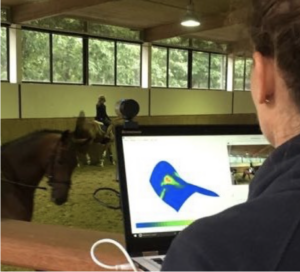
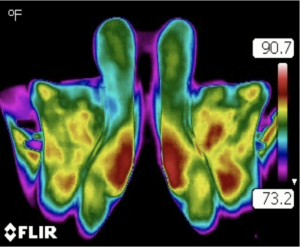
When a horse shows signs of pain, most of the time, it’s too late. Thanks to the progression of technology, tools such as the computerized saddle pad, thermography, gait analysis, heart monitor, fiber-optic cameras, and MRIs make it possible for us to evaluate the fit of the saddle and improve saddle fit before there is long-term damage.
Do you know why it is so crucial for a horse to lift and engage his back while riding?
It has to do with the musculocutaneous nerve. This nerve pictured below (right) is a mixed branch of the lateral cord of the brachial plexus. It is only when the horse can lift his back while being ridden, that the horse is able to bring his haunches underneath and get his hind leg closer to his sternum. This allows the horse to shift his weight more to his hind leg, which makes it easier for the horse to lift the rib cage with his thoracic sling.
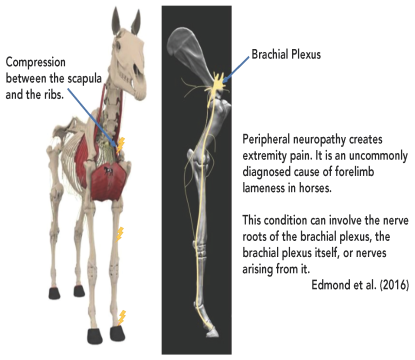
In this video, notice the distance between the ribcage and the upper arm of the horse. This space is where the brachial plexus is located. When the ribcage is dropped, the space contracts and the nerve gets pinched.
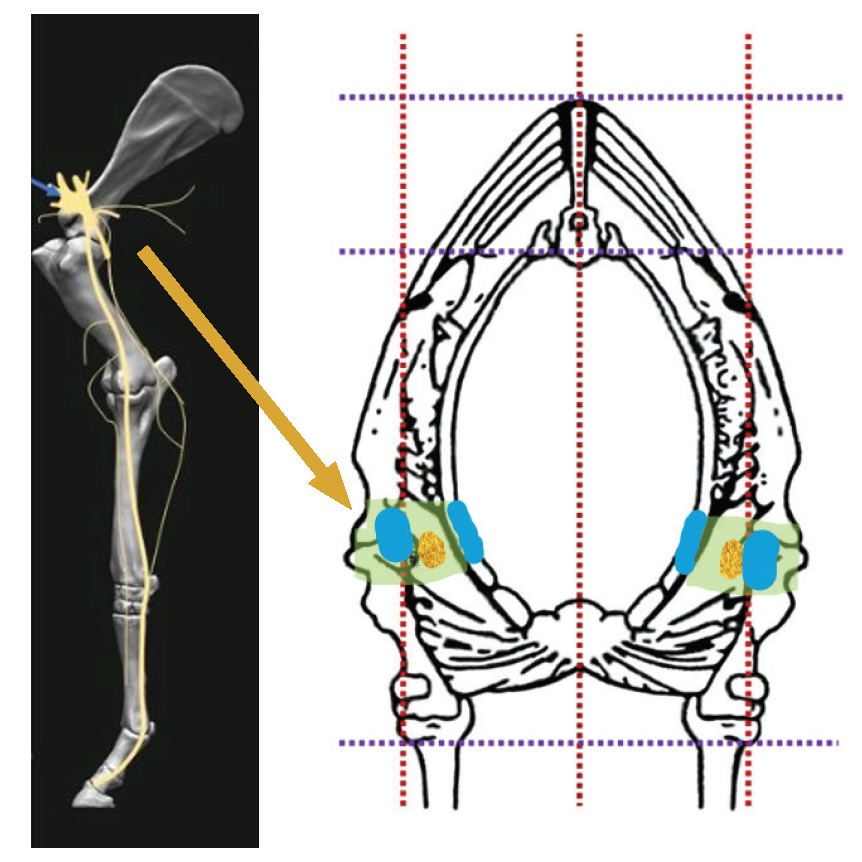
A rib cage shown as lifted will result in
an ideally free and unrestricted nerve.
According to a recent study by Anne-Laure Emond, if the horse’s rib cage is not lifted (image right), the musculocutaneous nerve gets pinched. When the nerve gets pinched, the horse cannot reach his full potential to pull his hoofs beside his chest to clear the jump consistently.
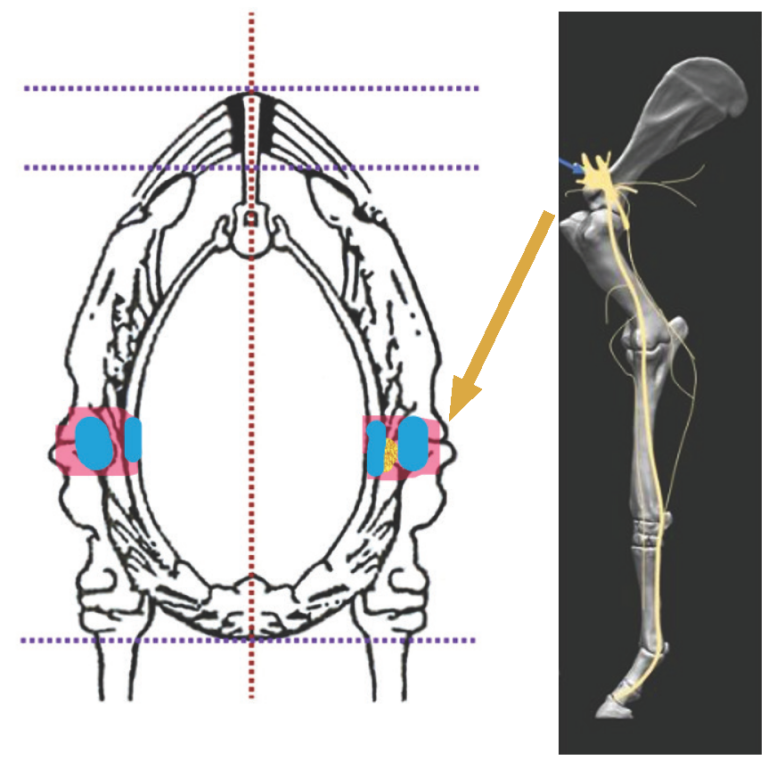
A low rib cage will result in a pinched nerve.
To understand how the Therapeutic Panel and Shoulder Rolling System works, please take a look at the videos below.
In this video you can clearly see how a horse’s shoulder muscles contract and elongate and how the scapular bones move upwards and backwards during the walk. If the left leg moves forward, the left scapula will slide backward, and when the right leg moves forward, the right scapula correspondingly moves backward.
This video features a realistic representation of the movement of the upper arm and shoulder blade of the horse. The upper arm’s joint is more round in shape and the shoulder blade is a concave half moon. The upper arm’s round joint fits into the shoulder’s concave half moon shape and rotates in a figure 8 pattern.
We are proud to introduce Schleese’s Therapeutic Panel with the Shoulder Rolling System.
At Schleese, we are proud to be industry leaders along with SaddleFit 4 Life® utilizing the most advanced tools and latest research in saddle fit for horse and rider. We are thrilled to announce that we have discovered a new fitting technique for horses who have injuries due to early starts, misuse, birth deformities, nerve damage, atrophy or accidents.
The Therapeutic Panels have created a new fitting technique which we’ve named the Shoulder Rolling System (SRS). The Therapeutic panels lift the front of the saddle and the gullet plate away from the horse’s withers and shoulders. This is the only system which allows the shoulder blade to “roll” and rotate freely with hardly any pressure on the 4 inches behind and around the horse’s shoulder blades.
In this video, we cut the panel open for you to see the Therapeutic Panel and Shoulder Rolling System from the front (the finished saddle will not look like this). The saddle has no contact on and 4 inches behind the shoulder blade while staying balanced and quiet on the horse’s back. Notice that the figure 8 movement of the horse’s shoulder blade is unimpeded as demonstrated in the previous video.
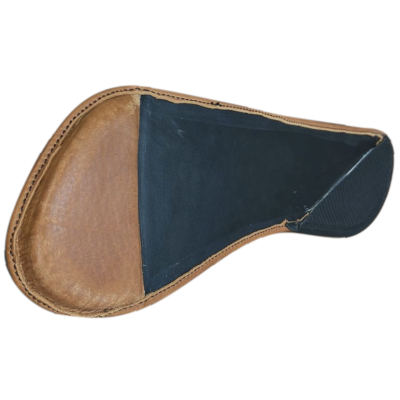
Therapeutic Panel (underside).
What Others in the Industry Are Saying...
Veterinary Surgeon Dr. Catalina Thiersen
Dr. Catalina Thiersen (BVSc MRCVS) has practiced in the UK, UAE, USA, as well as South Africa and has competed at a high level in show jumping. In this video, she discusses her exceptional experience and findings from utilizing Schleese’s Therapeutic Panels. Dr. Catalina Thiersen’s experience with the VCFS line has been extremely phenomenal. One of her clients purchased the Boundless VCFS Jumping Saddle and this is what she had to say: “We fitted her and she grew wings. It was amazing.”
Canadian Olympic Event Rider Edie Tarves
Canadian Olympic event rider Edie Tarves tried the Therapeutic Panel and here’s what she had to say: “I felt a massive difference between a saddle with Schleese’s PSI panel, and a Cosmic jumping saddle with Standard Bars, compared to the new saddle with the Therapeutic Panel and Shoulder Rolling System (SRS). The horse’s approach and recovery after the jump was remarkable!”
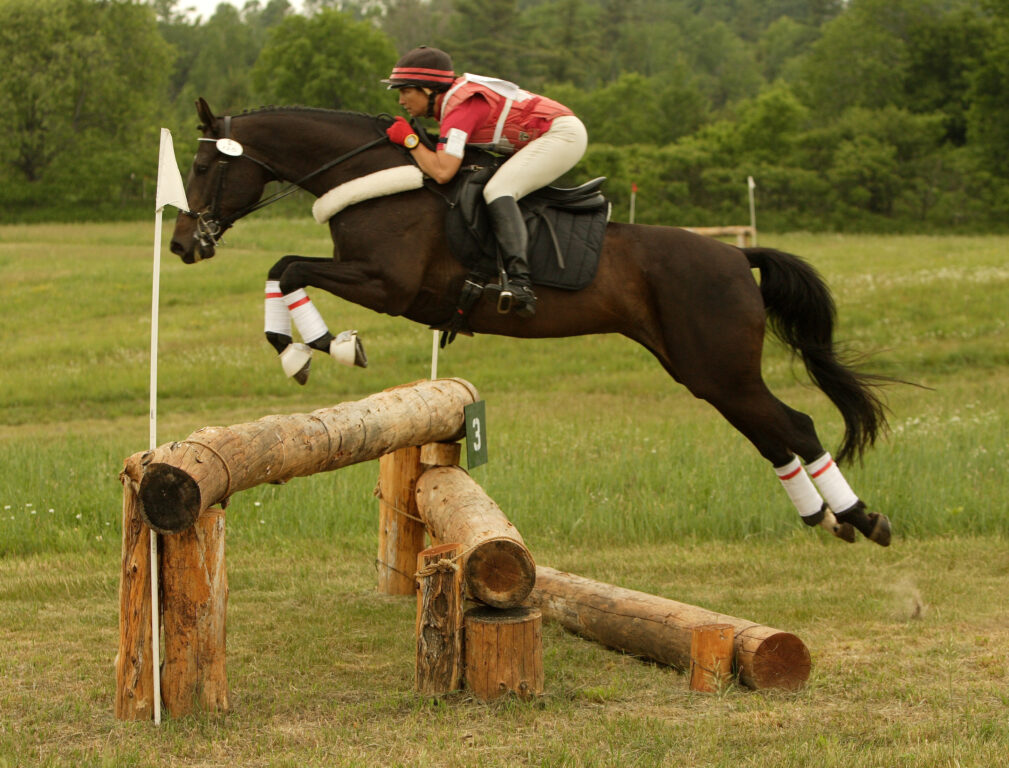
Don't Just Take our Word For It...
Let's Look at the Scientific Data Using a Computerized Saddle Pad!
Saddle WITHOUT Therapeutic Panels Installed
Saddle WITH the Therapeutic Panels Installed
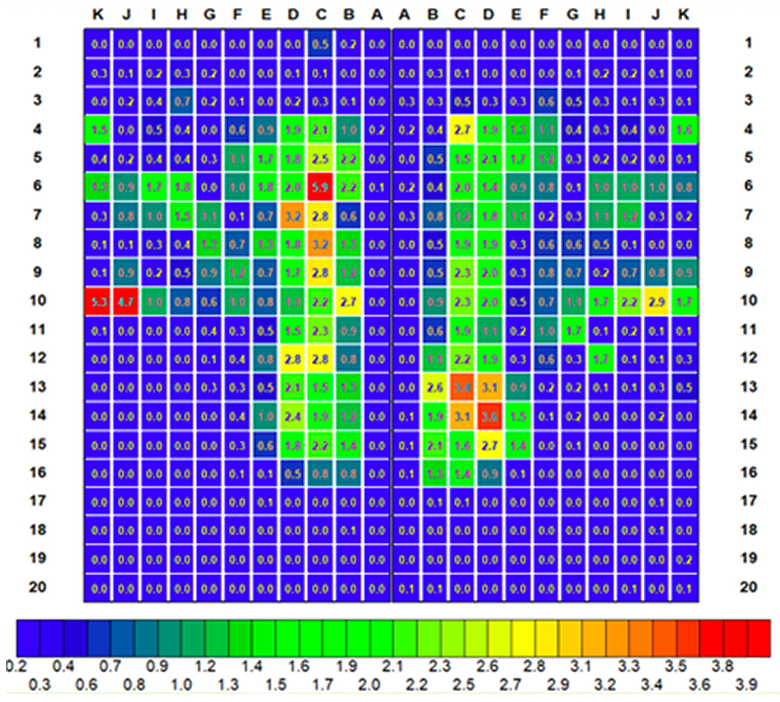
As shown in the photos above, the contact starts behind the shoulders (below row 3) all the way to the back with the spine being clear front to back. The saddle shows a higher amount of impact in the rear of the saddle during posting and cantering. The rider finds it difficult to balance in the saddle and is therefore pushed back against the cantle. In elevation, the saddle shows more contact in the front with a line of increased contact on the left, where the sensor of the heart monitor is located. Evidence of too much movement is apparent.
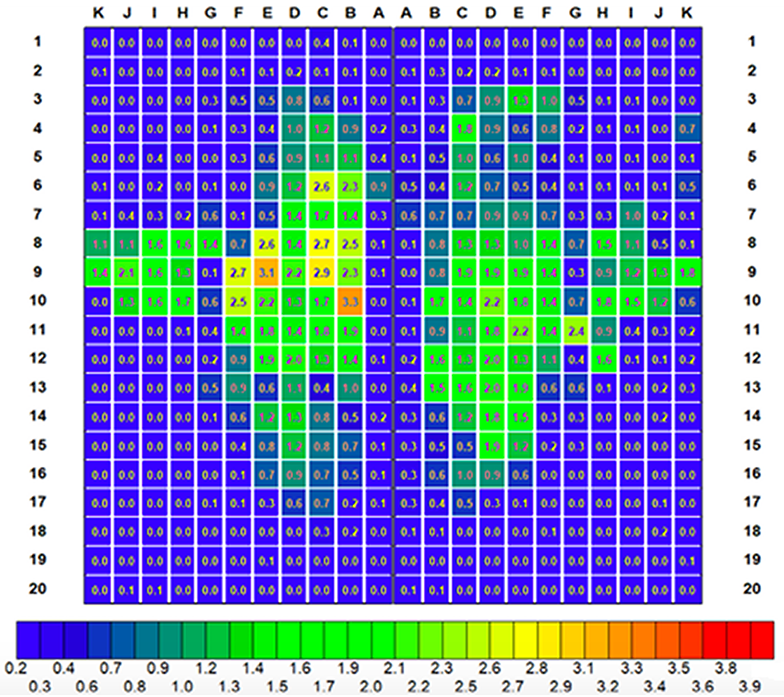
The saddle with the Therapeutic Panels shows clearance around the withers/spine/trapezius with impact on the rear of the panel. The saddle with the Therapeutic Panels does not rock or pinch on the top and side of the horse’s withers. The uniquely shaped material on the tree and the CB (Center-Balance) Stirrup Bar (Patent Pending) lead to minimum pressure around the withers and shoulder, while keeping the saddle stable. The new Therapeutic Panel allows the rider to have their weight distributed beneath them outwards, allowing for full shoulder movement in an upwards/backwards/figure-8 movement. The easy lift in the thoracic sling and the trapezius freedom is due mostly to the Therapeutic Panel, which includes the “lift-away-gullet-plate” setting, and the CB (center-balance) Stirrup Bar.
Let's Look at the Scientific Data Using a Gate Analysis!
Saddle WITHOUT Therapeutic Panels Installed
Saddle WITH the Therapeutic Panels Installed
Elevation
Walk: 1cm
Trot: 8 cm
Canter: 15 cm
Cadence
Walk: 50
Trot: 80
Canter: 106
Elevation
Walk: 1cm
"Trot: 9 cm"
Canter: 15 cm
Cadence
Walk: 50
"Trot: 90"
Canter: 106
The gait analysis shows that the new Therapeutic Panel allows for full shoulder movements in an upwards-backwards figure 8 movement. The easy lift in the thoracic sling and the trapezius freedom is due mostly to the Therapeutic Panel, and includes the lift-away-gullet-plate setting and the CB (center-balance) Stirrup Bar. Compared to other well-fitting saddles with shoulder relief panels, ours showed visibly more elevation and cadence, especially in the trot. There was also increased left to right symmetry when taking off for a jump, as well as a better bascule (scope), in the Therapeutic Panel. The pressure was kept away from the delicate and sensitive non-weight bearing structures used in the “Shoulder Rolling System”.
Seaverhorse.com
Seaver Girth
Heart Rate/Gate Monitor
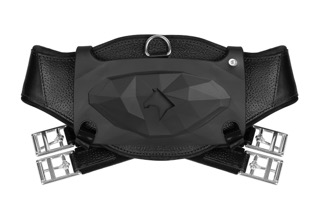
Scientific collection of equine physiological and biomechanical data during exercise (image is sample data from seaverhorse.com)

Let's Look at the Scientific Data Using a Heart Monitor!
Saddle WITHOUT Therapeutic Panels Installed
Heart Rate
Avg: 158 Max: 237
Saddle WITH the Therapeutic Panels Installed
Heart Rate
Avg: "102" Max: "204"
The heart monitor revealed huge improvements with the new Therapeutic Panel. There was no pressure on the acupuncture point MP13 (Lung Meridian point), so that the sympathetic nervous system of the horse was not activated during riding. This resulted in a calmer horse, less prone to spooking, which was easier to train with less stress to the horse. This was predicted, as the pressure was kept away from the delicate and sensitive non-weight bearing structures used in the “Shoulder Rolling System”. If the heart rate is artificially increased (with pressure on MP13), horses (like humans) have higher cortisol in their bloodstream (stress indicator), which increases the risk for ulcers and colic in the horse. Compared with other well-fitting saddles with shoulder relief panels, we saw in our analysis a lower average heart rate with the Therapeutic Panel.
What are YOU Waiting For ?
Schleese’s Shoulder Rolling System (SRS) is the only system on the market today that actually lifts the front of the saddle and the gullet plate away from the horse’s withers and shoulders, allowing the shoulder blade to “roll” and rotate with unparalleled freedom.
By clicking the button below, you can inquire as to how you can try a Schleese saddle with our new Therapeutic Panel and experience the difference for yourself today!
References
- Anne-Laure Emond, Et al. (2016) Peripheral neuropathy of a forelimb in horses: 27 cases (2000-2013). National Library of Medicine. https://pubmed.ncbi.nlm.nih.gov/27823370/
Dr. Sue Dyson (2020) Application of a Ridden Horse Pain Ethogram and Its Relationship with Gait in a Convenience Sample of 60 Riding Horses. MDPI. https://www.mdpi.com/2076-2615/10/6/1044
